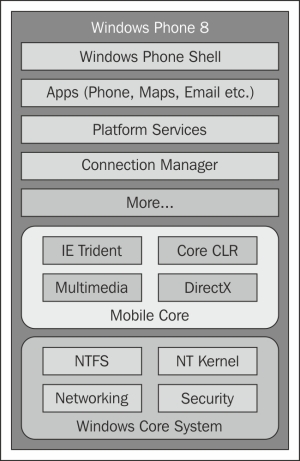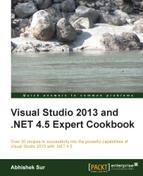In this chapter, we will cover the following recipes:
- Building your first Windows Phone 8 application following the MVVM pattern
- Working with Launchers and Choosers in Windows Phone
- Working with relational databases and persistent storage
- Working with notifications in Windows Phone
Windows Phones are the newest smart device that has come to the market and host the Windows operating system from Microsoft. The new operating system that was introduced to the market significantly differs from the previous Windows mobile operating system. Microsoft has shifted gears on producing a consumer-oriented phone rather than an enterprise mobile environment. The operating system is stylish and focused on the consumer. It was built keeping a few principles in mind:
- Simple and light, with focus on completing primary tasks quickly
- Distinct typography (Segoe WP) for all its UI
- Smart and predefined animation for the UI
- Focus on content, not chrome (the whole screen is available to the application for use)
- Honesty in design
Unlike the previous Windows Phone operating system, Windows Phone 8 is built on the same core on which Windows PC is now running. The shared core indicates that the Windows core system includes the same Windows OS, including NT Kernel, NT filesystem, and networking stack. Above the core, there is a Mobile Core specific to mobile devices, which includes components such as Multimedia, Core CLR, and IE Trident, as shown in the following screenshot:

In the preceding screenshot, the Windows Phone architecture has been depicted. The Windows Core System is shared between the desktop and mobile devices. The Mobile Core is specific to mobile devices that run Windows Phone Shell, all the apps, and platform services such as background downloader/uploader and scheduler.
